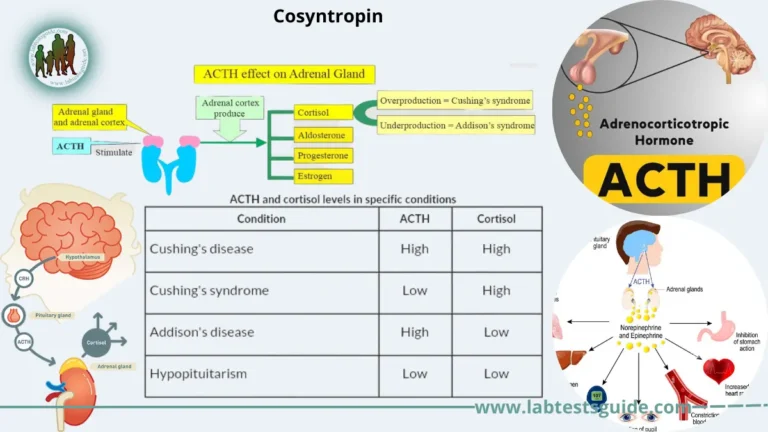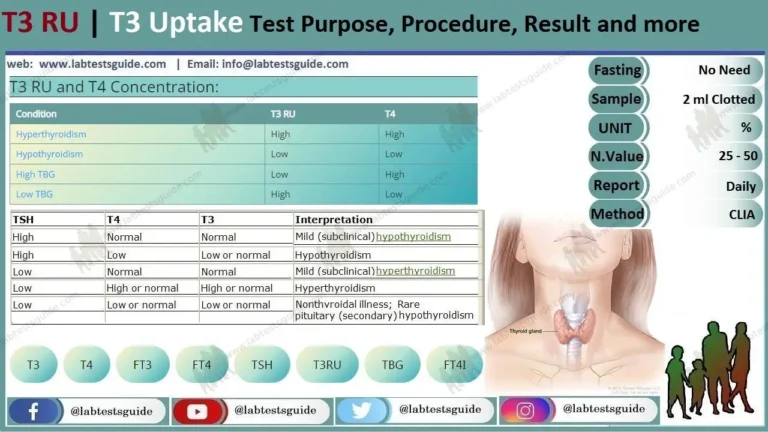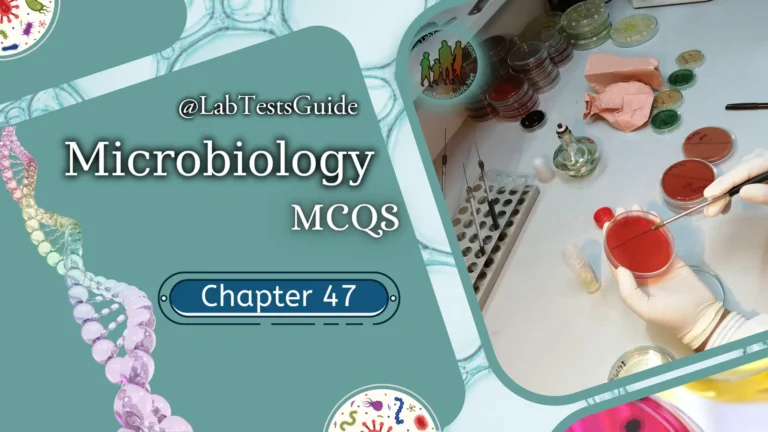5301 to 5350 MCQs for Lab Technician and Technologist Exam Preparation
5000 Plus MCQs for Lab Technician and Technologists are designed to test the knowledge and proficiency of laboratory professionals who work in the field of clinical laboratory science. These questions cover a wide range of topics related to laboratory science, including anatomy, physiology, microbiology, chemistry, and hematology.

If You like then share this to your friends and other social media.
If You have any question and suggestions then please Contact us Here
Questions 5301 to 5350
- All amino acids are optically active except
- Glycine✔
- Serine
- Threonine
- Tryptophan
- Out of 200 different amino acids form in nature the number of amino acids present in protein:
- 20✔
- 25
- 40
- 35
- Enzyme catalyzed hydrolysis of proteins produces amino acids of the form:
- D
- L✔
- DL
- All of these
- The ionizable groups of amino acids are at least.
- 1
- 2✔
- 3
- 4
- The neutral amino acid is
- Lysine
- Proline
- Leucine✔
- Histidine
- The amino acid containing hydroxyl group:
- Alanine
- Isoleucine
- Arginine
- Threonine✔
- The sulphur containing amino acid:
- Homoserine
- Serine
- Methionine✔
- Valine
- The basic amino acid:
- Glycine
- Leucine
- Histidine✔
- Proline
- The amino acid which synthesizes many hormones:
- Valine
- Phenyl alanine✔
- Alanine
- Histidine
- Amino acids are insoluble in
- Acetic acid
- Chloroform
- Ethanol
- Benzene✔
- The major end product of protein nitrogen metabolism in man is
- Glycine
- Uric acid
- Urea✔
- NH3
- An amino acid not involved in urea cycle is
- Arginine
- Histidine✔
- Ornithine
- Citrulline
- NH3 is detoxified in brain chiefly as
- Urea
- Uric acid
- Creatinine
- Glutamine✔
- In humans, NH3 is detoxified in liver as
- Creatinine
- Uric acid
- Urea✔
- Uronic acid
- The body protein after eighteen years
- Remains unchanged
- Is decomposed only slightly at intervals of one month
- Is in a constant state of flux✔
- Is used only for energy requirement
- The only known physiological methylating agents in the animal organism are
- Choline and betaine
- Choline and δ-adenosyl methionine✔
- Betaine and δ-adenyosyl methionine
- Dimehtyl glycine and betaine
- In the synthesis of 1 molecule of urea in the Kreb’s Hanseleit cycle, the number of ATPs required is
- 1
- 2
- 3✔
- 4
- For biosynthesis of proteins
- Amino acids only are required
- Amino acids and nucleic acids only are required
- Amino acid, nucleic acids and ATP only are required
- Amino acids, nucleic acids, ATP, GTP, enzymes and activators are required✔
- Transmethylation of guanido acetic acid gives
- Creatine phosphate✔
- Creatinine
- Choline
- n-methyl nicotinamide
- The 2 energy rich compounds needed for protein biosynthesis are
- ATP and GTP✔
- ATP and UTP
- ATP and CTP
- ATP and TTP
- The following ketoacid is involved in fixing dietary NH3 into amino acid:
- Pyruvate
- Oxalo acetate
- Oxalo succinate
- α-keto glutarate✔
- The metabolite which sustains urea cycle is
- Ornithine
- Citrulline
- Carbamoyl phosphate
- n-acetyl glutamate✔
- Tetra hydroglolate can be freed from N5 methyl tetrahydrofolate only by
- Nor epinephrine
- Ethanol amine
- Nicotinamide
- Vitamin B12✔
- Neogenesis of methyl group is
- The availability of methyl group form δ adenosyl methionine
- The availability of methyl group from betaine
- Interaction between N5 N10 methylene tetra hydrofolate with a NAD+ dependent reductase✔
- Availability of methyl group from methyl B12
- More creatinine is excreted by
- Adult males✔
- Adult females
- Children
- Pregnant women
- A growing peptide in a ribosome can not be shifted to the adjacent ribosome because
- It is firmly attached
- It will get the amino acid cleaved
- The gap between the ribosomes is too big for a shift✔
- The adjacent ribosomes have different composition
- The first amino acid incorporated in a polypeptide in a ribosome of a human is
- N formyl methionine
- Methionine✔
- Phenyl alanine
- Hydroxy lysine
- The first amino acid incorporated in a polypeptide in a ribosome of a bacterium is
- N formyl methionine✔
- Methionine
- Alamine
- Glycine
- The integrator between the TCA cycle and urea cycle is
- Fumarate✔
- Malate
- Pyruvate
- Citrate
- Bence jones proteinurial characterized by
- Non-heat coagulability
- Heat coagulability at 100°C
- Heat coagulability at 45 to 60°C✔
- Precipitation at 25°C
- Bence Jones proteins may be excreted in urine of patients suffering from
- Tuberculosis
- Diabetes mellitus
- Multiple myeloma✔
- Hyperthyroidism
- Xanthuric acid is an abnormal metabolite of
- Xanthine✔
- Uric acid
- Tyrosine
- Tryptophan
- Pyruvic acid can be obtained by transamination of alanine with
- α- keto glutaric acid✔
- Acetoacetic acid
- β−OH butyric acid
- Phosphoenol Pyruvic acid
- Formation of melanin from tyrosine requires the action of
- Dopa decarboxylation
- Diamine oxidase
- Peroxidase
- Tyrosinase✔
- In one of the following the quality of the protein synthesized is affected:
- Diabetes mellitus
- Gont
- Multiple myeloma✔
- Primaquine sensitivity
- Citrulline is an intermediate of
- TCA cycle
- Urea cycle✔
- Pentose cycle
- Calvin cycle
- The semialdehydes are formed under the action of enzymes characterised as
- Aldolases✔
- Peptidyl lysyl oxidases
- Collagenases
- Elastases
- Which of the following statement about the peptide bond is true?
- It is a carbon-carbon bond
- It has cis hydrogen and oxygen groups
- It is planar✔
- It has rotational freedom
- Isoenzymes for a given reaction
- Have different spedificities
- Have identical affinities for the same substrate
- Exhibit different electrophoretic motilities✔
- Contain similar ratios of different polypeptide chains
- The highest concentration of cystine can be found in
- Melanin
- Chondroitin sulphate
- Myosin
- Keratin✔
- One round of Edman degradation of the peptide: H2N— Gly—Arg—Lys—Phe— Asp— COOH would result in which of the following structures or their phenyl isothiocyanate derivatives?
- H2N—Gly—Arg—COOH + H2N—Lys— Phe— Asp—COOH
- H2N—Gly—Arg—Lys—Phe—COOH + Asp
- H2N—Arg—Lys—Phe—Asp—COOH + Gly✔
- H2N—Gly—Arg—Lys—COOH + H2N—Phe —Asp—COOH
- Which of the following techniques is used to separate proteins based upon differences in their mass?
- Isoelectric focusing
- Dialysis
- SDS-gel Electrophoresis✔
- Western blotting
- The greatest buffering capacity at physiologic pH would be provided by a protein rich in which of the following amino acids ?
- Lysine
- Histidine✔
- Aspartic acid
- Valine
- Which one of the amino acids could serve as the best buffer at pH 7?
- Glutamic acid
- Arginine
- Valine
- Histidine✔
- Which one of the following statements concerning glutamine is correct?
- Contains three tetratable groups
- Is classified as an acidic amino acid
- Contains an amide group✔
- Migrates to the cathode during electrophoresis at pH 7.0
- One of the given example is an amino acid:
- Oh-Lysine
- Protein
- Leucine✔
- Serine
- The lone pair of electrons at one of the ring nitrogens in the given amino acid makes a potential ligand, which is important in binding the iron atoms in hemoglobin:
- Tryptophan
- Threonine
- Histidine✔
- Serine
- The amino acid which is not optically active is
- Alanine
- Glycine✔
- Glutamine
- Lysine
- Optically active compounds are capable of
- Different reactions
- Rotating plane of polarized light✔
- Showing same chemical properties
- None of these
- The reference compound for absolute configuration of optically active compound is
- Alanine
- Lactic acid
- Glyceraldehyde✔
- Dihydroxy acetone
The questions are typically designed to assess the technical skills and knowledge required for the laboratory profession, including the ability to analyze laboratory test results, perform laboratory procedures, and maintain laboratory equipment.
To prepare for these MCQs, candidates should have a thorough understanding of the key concepts and principles of laboratory science. They should also be familiar with common laboratory equipment and procedures, as well as laboratory safety protocols.
Candidates may also benefit from studying specific laboratory science textbooks or taking online courses that cover the material tested in the MCQs. Additionally, practicing sample MCQs and reviewing the answers can help candidates identify areas where they may need to improve their knowledge or skills.
Overall, the MCQs for lab technologists are designed to be challenging and comprehensive, requiring candidates to demonstrate a high level of proficiency in the field of laboratory science.
Possible References Used







